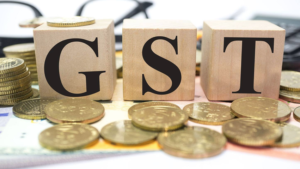Home » Commentary » Opinion » 2020 vision of GST
· Ideas@theCentre
 The Goods and Services Tax (GST) turns 20 next Wednesday, but policy wonks have been talking about it for at least twice as long: first, whether to have it; then how it should be designed; and now whether to make it bigger.
The Goods and Services Tax (GST) turns 20 next Wednesday, but policy wonks have been talking about it for at least twice as long: first, whether to have it; then how it should be designed; and now whether to make it bigger.
A higher rate or broader base for the GST plays a central role in many a plan for tax reform. The most common ideas are for an increase in the rate to 15% and/or a broadening of coverage to include one or more of food, water, health and education services.
Australia has left the GST rate unchanged since inception and it is well below the international average of 16%. Those favouring an increase think this points to unused taxable capacity waiting to be tapped.
Moreover, the proportion of consumer spending covered by the GST has been eroded as expenditure on exempt items has risen relatively fast. A broader base would better serve the original objective of a simple, efficient, non-distorting tax.
Either way, a lot of extra revenue could be raised and traded off for lowering or abolishing other taxes such as personal income tax and the most economically harmful state taxes.
What could possibly go wrong?
For a start, there would be enormous pressure to compensate — and over-compensate — low income households (generously defined), which would divert a lot of the extra revenue before a single cent became available for anything else.
Don’t forget the GST is a Commonwealth tax, so any change to it must run the gauntlet of the Senate, where horse-trading and compromise would produce something very different from an elegant trade-off.
Then there is the likelihood that the bigger GST would end up financing higher government expenditure, not reductions in other taxes. GST revenue all goes to the states, whose budget plans have been derailed by the pandemic — leaving theme hungry for more revenue.
A trade-off between a higher GST and lower other taxes is theoretically appealing, but in the real world of politics is a mirage. The trade-off would collapse over time as governments change and priorities change, leaving the higher GST in place without the reductions in other taxes.
The GST and what came with it (such as abolition of wholesale sales tax) was a very worthwhile reform, but the case for increasing it 20 years later raises many concerns for those favouring lower taxes and smaller government.
2020 vision of GST